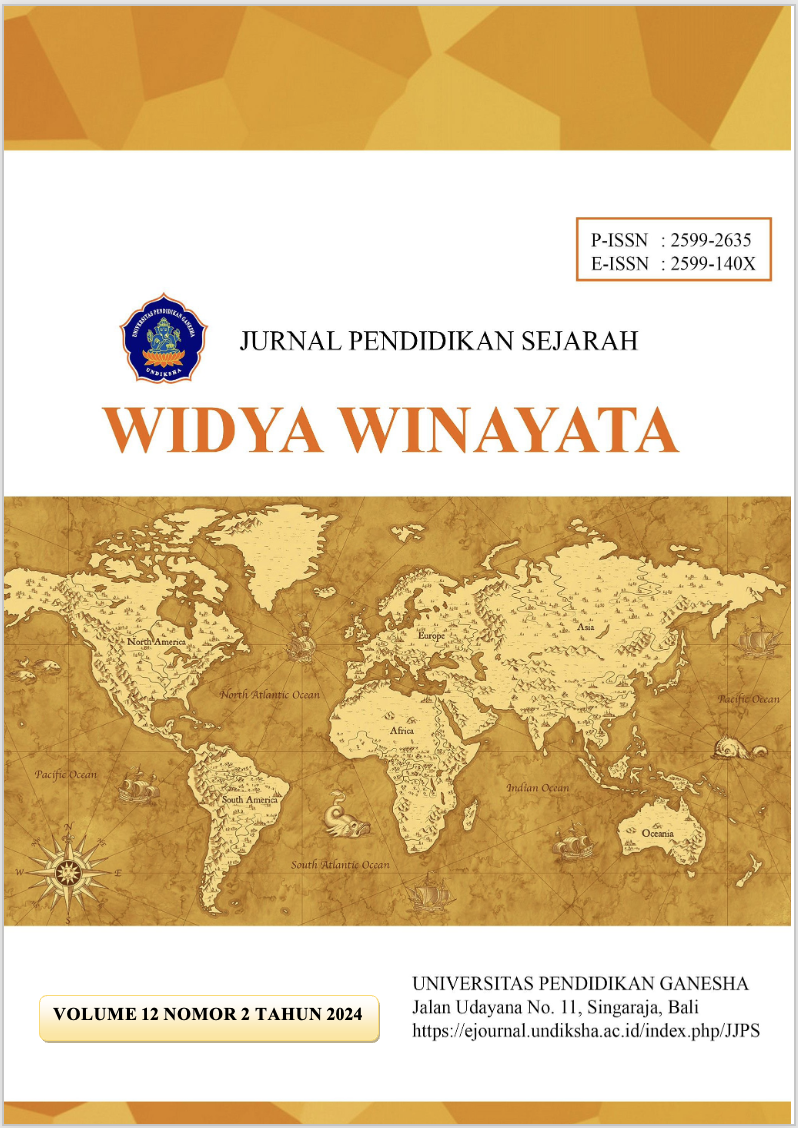History And Preservation Of The Kebo-Keboan Tradition In Alasmalang Village, Singojuruh, Banyuwangi, East Java As A Source Of Learning History In High School
DOI:
https://doi.org/10.23887/jjps.v12i2.64140Abstract
ABSTRACT
This study aims to find out: (1) to find out the background of the emergence of the Kebo-keboan tradition in Alasmalang Village, Singojuruh, Banyuwangi. (2) to find out the character values that exist in the Kebo-keboan tradition of Alasmalang Village, Singojuruh, Banyuwangi. (3) to find out the potential of the Kebo-keboan tradition that can be used as a source of learning history in high school. The research methods used are historical research methods with Steps, Heuristics, Observation Techniques, Interview Techniques, Document Study Techniques, Source Criticism, Interpretation and Historiography. The results showed that: Kebo-keboan tradsisi is a tradition born from a water civilization. Water in a civilization plays an important role for life. Many civilizations were born from the flow of water such as civilizations born in the Tigris river valley. The traditional kebo-keboan ceremony is carried out by the osing community in Alasmalang Village, Singojuruh, Banyuwangi, East Java as a repelling ritual and a form of gratitude for a bountiful harvest. This tradition arose as a result of a Tirakat or prayer request made by Great-Grandfather Karti who lived around the 18th century over the plague that hit the village at that time, and an attempt to find a solution due to prolonged crop failure. The people of Alasmalang village believe that for generations if they carry out the traditional Kebo-keboan ceremony will prevent them from all diseases that have plagued their village in the past. This Kebo-keboan tradition takes place in the month of Suro or the month of Muharam in the Islamic calendar. The aspects that can be used as a source of learning history based on curriculum and syllabus analysis are Religious, Social and Cultural aspects which are then compiled in modules as learning supports to be used as a source of learning history in high school.
Keywords: Background, Implementation, Learning Resources
Downloads
Published
How to Cite
Issue
Section
License
Copyright (c) 2024 Yudi Setiawan, Ketut Sedana Arta, I Wayan Pardi

This work is licensed under a Creative Commons Attribution-ShareAlike 4.0 International License.





.png)
